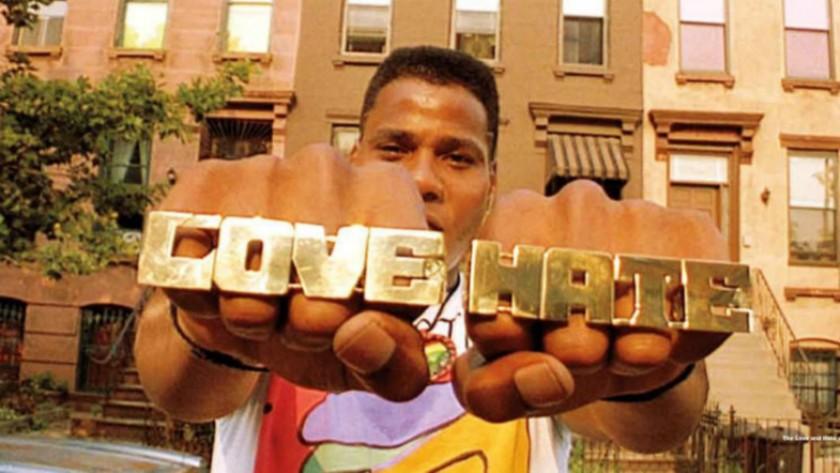
“Do the right thing” is a simple phrase that can be easier said than done at times. As a child, my parents would tell me to “do the right thing”. They’d also ask me “what’s the right thing to do?”, in order to guide me to find the answer to how I should respond in certain situations. The word right in the phrase carries so much weight. It means correct, morally good, justified, or acceptable. Spike Lee’s 1989 masterpiece Do The Right Thing examines race in America without bias, making it a significant film on many levels and still culturally timeless.
On the hottest day of the summer, one Brooklyn community’s simmering racial tensions boil over after Radio Raheem (Bill Nunn) is killed by police officers. A riot ensues and Sal’s Pizzeria, the neighborhood hangout, is burned to the ground in the film. This may sound vaguely familiar in light of the recent murder of George Floyd and the response thereafter, but Lee wrote the film in response to the murders of Eleanor Bumpers, Michael Griffith, Yvonne Smallwood and other victims of police brutality or racial violence in the 1980s. When we look at history, “Do The Right Thing” takes aim at a cancer that continues to rear its ugly no matter the decade in society. It’s the unspoken, learned prejudice (whether by upbringing or bad personal experiences) and biases that we have for people who appear different from us that manifests itself in what seems like an isolated incident. Yet, like the film suggests, it stems from a build-up of unchecked issues.
So how does Lee build up the tension? Wisely, he employs French New Wave (FNW) characteristics throughout the film. He uses jump cuts in the editing of the film, direct address to the camera, handheld takes, and long takes. All of these choices are typical of FNW. From the opening frames we know we’re in for a fight as “Fight The Power” blasts and Rosie Perez dances in a visceral, near fighting style. Lee then introduces us to each of his main characters, which also introduces us to the different races and cultural sounds within the neighborhood. Sound, throughout the film, is another character fighting for our attention as he wisely uses it to clash together before community members do.
However, his ability to allow each character spew out racial epithets directly to the camera and to the ears of his audience is one of the most memorable moments in the film. It’s in your face, inescapable, terrible, and exactly how we sound when we demean each other based off of skin color and stereotypes. Due to the fact that he spreads the hate and prejudice evenly amongst the cast while consciously never making a statement on what is right in the fictional situation, we can come to conclusions for ourselves. In a sense, Lee holds up a mirror to his audience and allows us to assess what causes these issues. It’s that moment of introspection when we connect with our conscience that informs us on the difference between right and wrong. The beauty of cinema is that in a dark theater (or a quiet room in your house) you can make the connection on what is the right thing?
There’s no doubt that Spike Lee and this film had an impact on me as a young kid, born in the ’80s. With dreams of being a director, his voice and example were ones that let me know I could do it too. Two film degrees and years of film criticism under my belt later, I continue to find new things to appreciate about the artistic accomplishments of this film. The mixture of a good story with purposeful, cinematic technique, makes Do The Right Thing a film worthy of examination whether in film classrooms or the “classroom” in your home.
— Kevin Sampson (Picture Lock)
- Directed by: Spike Lee
- Produced by: Spike Lee
Jon Kilik
Monty Ross - Written by: Spike Lee
- Music by: Bill Lee
- Cinematography by: Ernest R. Dickerson
- Editing by: Barry Alexander Brown
- Release Date: 1989
- Running Time: 120
- Language: English
Arts & Faith Lists:
2020 Top 100 — #8